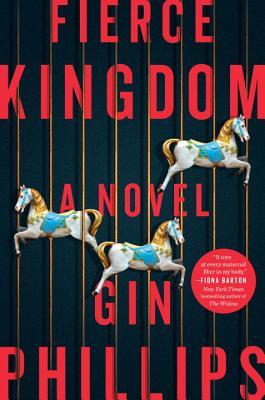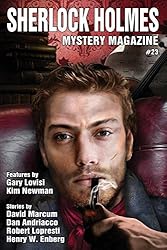by Jenni Legate
(Travel writer extraordinaire Jenni Legate, a good friend of mine, has penned quite a story with a setting beyond exotic. So when she offered its use to pinch-hit for me during my regular rotation on the Sleuthsayers blog, I jumped at the chance to pub it here for her. So have a great Thanksgiving, one and all, and read on for "Hidden Doorways," a "tale of lust and murder," set in medieval Myanmar! See you in two weeks! –Brian)
Hidden Doorways
Every building has a secret entrance, one even the architects somehow overlooked. I use the secret entrances in the great temples of Bagan, hiding in the shadows, listening for the secrets bricked up in the walls, and searching for safety in this kingdom faraway from my home in Kala.
My name is Phabhavati, and in the year 1151, my father made a gift of me in tribute to King Alaungsithu in Bagan. I miss my home in the mountains of Kala, where waterfalls sing in the lush mountain forests and the air is crisp and pure. Bagan was once a forest kingdom by the river, but now it is a hot, dusty forest of temples in the desert. Where pines once grew, cacti bloom in sandy tracks between pagodas. Every king for years has commissioned temples to commemorate their greatness. The forests were cut to fire the kilns that produced the bricks to build the temples. It was the main enterprise of the kingdom for at least three generations – aside from raiding nearby kingdoms like my father’s, that is.
Before I came to Bagan, my father sent my older sister, Princess Kyabaun, as tribute, and she was married to Intaw Syan, the King’s son, who was later known as Narathu. Kyabaun was beautiful with long, dark hair, eyes like toasted almonds, and long lashes. She used thanaka paste, made from crushed bark and scented like sandalwood, to paint intricate designs on her face and arms, adding to her legendary beauty. Narathu had to have her. He made a point to take everything he wanted.
King Alaungsithu was a great builder who traveled extensively throughout his kingdom. I resented my father for sending me to him, yet I felt lucky to be with a man who was kind. His big passions and many consorts ensured that my time spent with him was limited. I was happy not to be in Kyabaun’s golden slippers.
I started hiding in shadows and listening for secrets the day my sister asked me a favor. She whispered as she told me that Narathu mocked our Hindu traditions. Kyabaun trembled when she described how Narathu snatched a kitten from her lap and strangled it.
Narathu’s brother, Min Shin Saw, heir to the throne, sought an audience with King Alaungsithu. Kyabaun met me in my chambers.
“Narathu wants you to break protocol tomorrow and stay seated next to the King when Min Shin Saw arrives,” she said.
“I cannot. That would dishonor our father,” I said.
“Please,” Kyabaun pleaded, “Narathu will punish me if you do not.”
I could not refuse my sister. I wish I had chosen differently. I wish I could have kept her safe.
The next day, in the throne room of the Royal Palace, I reclined with other consorts on a sofa beside King Alaungsithu. Queen Yadanabon sat to the right of the King. When Prince Min Shin Saw and Narathu arrived to pay homage to the King, I continued sitting, even when the other consorts rose. Narathu’s long, slender face gave nothing away as he kneeled before the King and bowed his dark head to the ground. Min Shin Saw spat his words at me: “I am the eldest son. Shall this Kala wench abide on the couch in my presence before all the ministers and councilors?” He turned from the King and marched out. Narathu looked to the King in mock shock.
At Narathu’s suggestion a few days later, King Alaungsithu gave a robe normally worn only by princes to an attendant. When the attendant showed up wearing the robe at the next royal council, Min Shin Saw stripped it from him, saying “This garment is not for a king’s usher or nurse to wear. Only the King’s brothers and sons are worthy of wearing it.”
King Alaungsithu flew into a rage. “Min Shin Saw, you are no longer my heir. Narathu is now my heir. You shall be exiled from the kingdom.”
Prince Min Shin Saw went into exile in Ava a few miles northeast of Pagan. He tried to build a peaceful life there, happy to be done with the intrigues of court.
Kyabaun grew listless as Narathu gloated. For weeks, I watched from the shadows as Narathu began meeting privately with his friend Theidikaggi, a man built like an ox and feared widely in Bagan. In 1167, King Alaungsithu mysteriously began to weaken. His stomachaches and headaches threatened to cripple him. He was violently ill for days. Had Narathu poisoned him?
One day, King Alaungsithu slipped into a coma. Narathu had him carried by litter to Shwegugyi Pagoda, the Golden Temple King Alaungsithu built in just seven months. Narathu presided over council meetings as though nothing had happened.
I was delivering food and bedding for my King when he woke briefly. His consort, Ti Lawka Sanda Dewi, told him his son Narathu had usurped the throne. Shocked, I hurried out into a hallway. As King Alaungsithu cried out in torment, Narathu came in. Seeing his chances at holding the throne slipping away with each breath his father took, he gathered the bedding and pressed it on his father’s face. Then, he turned to Ti Lawka Sanda Dewi with his sword. I shrank back into the shadows as her screams rose in terror, then stopped.
When Min Shin Saw heard of his father’s death, he gathered his army and began to march back to Bagan to take the throne. He had no idea how Narathu had betrayed him. His boat landed at the port with Narathu there to greet him. “Brother!” Narathu greeted him him with a bow, offering his sword in homage. “Our new king.” Min Shin Saw was immediately consecrated as King, and there was a great celebration in the palace that night. The men drank late into the evening. But the next morning, Min Shin Saw did not awake from his slumber. He was dead, with purpled lips and a froth at his mouth, his face contorted in agony. Narathu seized the throne.
As King, Narathu immediately ordered construction of a temple, the Dhammayangyi, in his honor. Its name means “the rays of the dharma, or the teachings of Buddha.” King Narathu announced that the temple would contain twin Buddhas, representing the past and the future. The temple was built to atone for his sins, but Narathu’s cruelty grew worse with each day. He was fanatical about the construction and insisted that no mortar be used. As the workers lay their bricks, he inspected their work.
If he could fit a pin between the bricks, he cut off the worker’s hand and watched him bleed to death. Theidikaggi conscripted monasteries full of monks into the construction crews, stripping them of their monk’s robes. The luckiest monks escaped to Ceylon. I stayed in the shadows and waited on Kyabaun when I could. I explored the great temple in the evenings, learning my way in the dark. Dhammayangyi was a vast structure with a cave in the middle. Bats already hung from the ceiling,
and I could hear them calling to one another in the darkness.
The King’s scribe was Narathu’s uncle, Mahabo. He tried to advise Narathu, but they disagreed often. One day at the construction site, in a fit of rage, King Narathu drew his sword and took Mahabo’s head. Narathu eyes glowed with triumph. The workers looked down and kept working. Stories of Narahu’s viciousness grew.
At home at the Royal Palace, Narathu’s behavior was explosive. Kyabaun feared for her life and the lives of her sons. Narathu took her son Ottorathu from her side, promising to show him the construction of the temple. Ottorathu never returned. Kyabaun fled the royal palace. When she came to me, I took her to a quiet spot deep in the Dhammayangyi temple where I thought she could hide. As I tried to get her settled into a temporary bed for the night, we heard a scraping noise. Narathu was in the temple! His sword struck the stone floor as he came closer. Kyabaun told me how much she hated him and how he frightened her. I ran, begging Kyabaun to follow me. She was slow to follow. Narathu confronted her.
“You are sworn to be my bride, yet I heard you whisper that you hate me,” he roared.
“My King,” Kyabaun started, “you are scaring me.”
Narathu drew his sword and stabbed Kyabaun. Throwing the sword aside, he grabbed her by the throat, choking the life from her. I stood frozen in the shadows, stifling my horror. I wanted to save my sister, but there was nothing I could do.
When Narathu left the temple, I fled into the night. As a lesser consort to the former King, I would not be missed. I ran home to my father’s kingdom. I told my father all that I had observed.
My father grew angry but quiet. He called eight of his best men together. “You will pose as Brahmins,” he ordered. “Once you have killed the King and revenged my daughter’s death, you will kill yourselves. Your families will be provided for.” The eight men dressed in Brahmins’ robes, and each carried a gift for the King. They arrived at the palace and announced their intention to honor the king. Narathu gave them an audience in the heart of his new temple. The eight men surrounded him, creeping closer. Then they struck. I don’t know whose blow caused his death, but all eight of the men struck him. Then they turned on Theidikaggi. “Your actions caused the deaths of so many monks, and you failed to stop the death of Kyabaun.” Theidikaggi fled the temple and was never found.
Finding King Narathu dead, the workers immediately stopped construction. He had been in power for three tyrannical years. Rumors began to circulate that the temple was haunted by the ghosts of Narathu, Kyabaun, her son, Ottorathu, and workers who had died constructing the temple. The inner corridors were walled off, filled with brick, to keep the ghosts within. I never went back to Bagan or the temple of Dhammayangyi. But I remember where those hidden doorways lie, deep within the temple, concealing their secrets.
---
I wrote this story after a trip to Bagan, Myanmar where this temple fired up my imagination. As we made our way through this temple, it was eerie. Away from the crowds near the entrance, the tall, narrow corridors with walled up doorways leading to the inner sanctum of the temple created an oppressive atmosphere. We stumbled into the pitch-black bat cave, overwhelmed with the odor of bat guano, the bats squealing to one another on the ceiling. If haunted, that would have been the spot where we would have seen an apparition. Do you believe in ghosts?
Most of the characters in my fictionalized account come straight out of Burmese history. I took liberties with the character of Phabhavati, the narrator of this story, namely I don’t know what her relationship to Kyabaun really was, but their father had made tribute of both of them to the King of Bagan, Alaungsithu. Much of this fictionalized account comes straight from the stories related by guides at Dhammayangyi, and the books about Bagan. My main sources other than oral histories were Pagan/Bagan (This is the Real Burma), Book 3, by Markus Burman, 2014, and Wikipedia articles.
---
Jenni Legate was born in Libya and grew up in Africa and Asia. She has traveled extensively throughout her life and has lived in Libya, Nigeria, the Congo, Pakistan, the Philippines, the Washington DC area, Alaska, England, Idaho, and the Seattle area. Her childhood was enriched by diverse experiences such as hurricanes, earthquakes crocodiles, army ants, snakes, historically notorious dictatorships, coups, and wars. She currently lives in Thailand with her husband/best friend/travel partner. She enjoys learning about the history, politics, religious beliefs, and daily lives of other cultures. Jenni has worked as a paralegal, a mediator, a small business consultant, and a freelance writer, publishing several articles for local-interest magazines and a business magazine. She has written several award-winning memoir pieces for writing contests. Jenni currently writes non-fiction, memoir, and fiction, drawing upon her global experiences.
 Robert Crais got his start in television, writing for Hill Street Blues, Cagney & Lacey, and others. He says he still pins index cards with ideas on a cork board in his office and sorts them until he knows where he's going. Maybe having to write quickly and know the good guys will survive at the end makes that necessary. Mark Twain didn't outline but Charles Dickens did.
Robert Crais got his start in television, writing for Hill Street Blues, Cagney & Lacey, and others. He says he still pins index cards with ideas on a cork board in his office and sorts them until he knows where he's going. Maybe having to write quickly and know the good guys will survive at the end makes that necessary. Mark Twain didn't outline but Charles Dickens did.


































